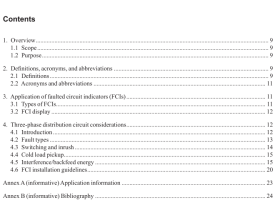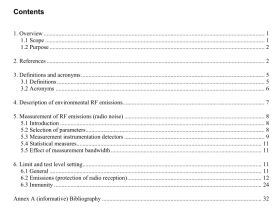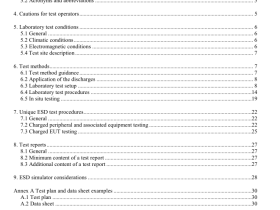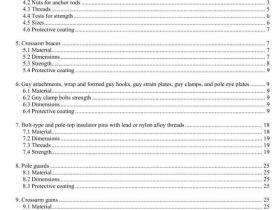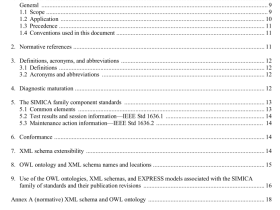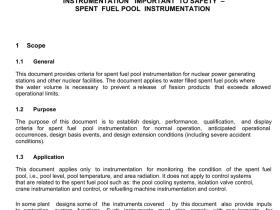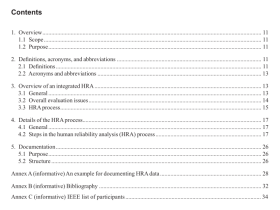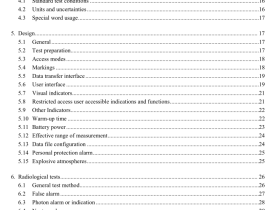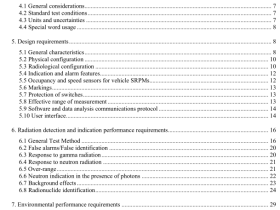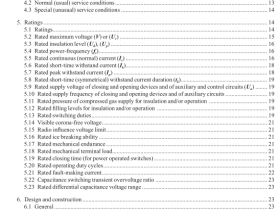IEEE N42.43 pdf download
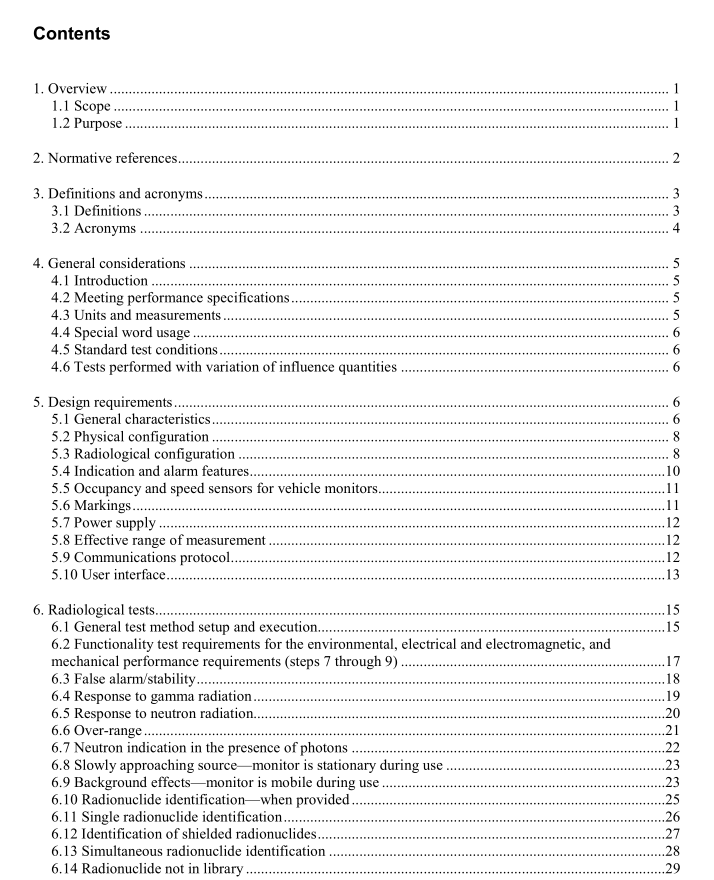
IEEE N42.43 pdf download American National Standard Performance Criteria for Mobile and Transportable Radiation Monitors Used for Homeland Security
1. Overview
1.1 Scope This standard specifies the performance requirements and tests for transportable and mobile radiation monitors that detect and identify radionuclides, and when provided, indicate the presence of neutron radiation. Transportable radiation monitors are designed to be transported to a location and used for a specific task or for a specified period of time; they do not require permanent mounting platforms; may be mounted to a vehicle such as a trailer; and are only used when the vehicle is stationary. Mobile radiation monitors are typically in operation on a platform that is in motion but that can also be used while stationary. Mobile monitors may be mounted in vehicles including, for example, trailers.
1.2 Purpose This standard specifies the operational and performance requirements for transportable and mobile radiation monitors used in homeland security applications. Operational requirements established by this standard include radiation detection and radionuclide identification, and those requirements associated with the expected electrical, mechanical, and environmental conditions while in transit and when deployed. The tests described in this standard provide a means to help ensure that a monitor meets the requirements stated.
2.Normative references
The following referenced documents are indispensable for the application of this document (i.e., they mustbe understood and used, so cach referenced document is cited in text and its relationship to this document isexplained). For dated references,only the edition cited applies. For undated references, the latest edition ofthe referenced document (including any amendments or corrigenda) applies.
ANSI N42.42,American National Standard Data Format Standard for Radiation Detectors Used forHomeland Security. ‘
ASTM B152,Standard Specification for Copper Sheet, Strip,Plate, and Rolled Bar.2FCC Part 15,Code of Federal Regulations, Title 47, Part 15 (47CFR 15).
IAEA Safety Guide No.RS-G-1.9, Categorization of Radioactive Sources.IEC 60068-2-1,Environmental testing—Part 2-1: Tests—Test A: Cold.3IEC 60068-2-2,Environmental testing—-Part 2-2:Tests—Test B: Dry heat.
IEC 60068-2-11,Basic environmental testing procedures—Part 2-1 1: Tests—Test Ka: Salt mist.IEC 60068-2-18,Environmental testing—Part 2-18:Tests—Test R and guidance: Water.
IEC 60068-2-64,Environmental testing—Part 2-64: Tests—Test Fh: Vibration,broadband random andguidance.
IEC 60068-2-66,Environmental testing—Part 2: Test methods—Test Cx: Damp heat,steady state(unsaturated pressurized vapour).
IEC 60068-2-68,Environmental testing——Part 2-68: Tests—Test L: Dust and sand.
IEC 61000-4-2,Electromagnetic compatibility (EMC)—Part 4-2: Testing and measurement techniques—Electrostatic discharge immunity test.
IEC 61000-4-3,Electromagnetic compatibility(EMC)—Part 4-3: Testing and measurement techniques—Radiated, radio-frequency, electromagnetic field immunity test.
IEC 62438,Radiation protection instrumentation—Mobile instrumentation for the measurements of photonand neutron radiation in the environment.
IEC 62706,Radiation protection instrumentation—Environmental,electromagnetic and mechanicalperformance requirements.
ISO 4037-3,X and gamma reference radiation for calibrating dosemeters and doserate meters and fordetermining their response as a function of photon energy—Part 3: Calibration of area and personaldosemeters and the measurement of their response as a function of energy and angle of incidence.4
3. Definitions and acronyms
3.1 Definitions
For the purposes of this standard, the following terms and definitions apply.IEEE Standards DictionaryOnline should be consulted for terms not defined in this clause.5
alarm: An audible,visual, or other signal activated when the instrument reading or response exceeds apreset value or falls outside of a preset range.
area monitor: A radiation monitor that is designed to detect increases in the ambient radiation level withinan area either surrounding the detection assembly or adjacent to the detection assembly.
calibrate: To adjust and/or determine the response or reading of a device relative to a series ofconventionally true values.
calibration: A set of operations under specified conditions that establishes the relationship between valuesindicated by a measuring instrument or measuring system and the conventionally true values of the quantityor variable being measured.
coefficient of variation (COV): The square root of the variance,s , divided by the mean value of n, thenumber of readings, multiplied by 100.
coverage factor: Numerical factor used as a multiplier of the combined standard uncertainty in order toobtain an expanded uncertainty.
detector: A device or component designed to produce a quantifiable response to ionizing radiation.
detection zone: Area where radiation measurement takes place for the purposes of detection oridentification.
effective range of measurement: Range of measurements within which the requirements of this standardare met.
evaluation distance: The distance between a test source and the exterior face(s) of the monitor unit( s) usedduring a trial which corresponds to the surface of the detection assembly.
exposure rate: The measure of ionization produced in air by x-ray or gamma-ray radiation.NOTE—The special unit of exposure rate is the roentgen per hour, abbreviated in this standard as R/h.6
false alarm: Alarm caused by something other than an increase in measured radiation level oridentification of a radionuclide.
indication: Displayed signal from the instrument to the user conveying information such as scale ordecade, status, malfunction, or other information.
influence quantity: Quantity that may have a bearing on the result of a measurement without being thesubject of the measurement.
